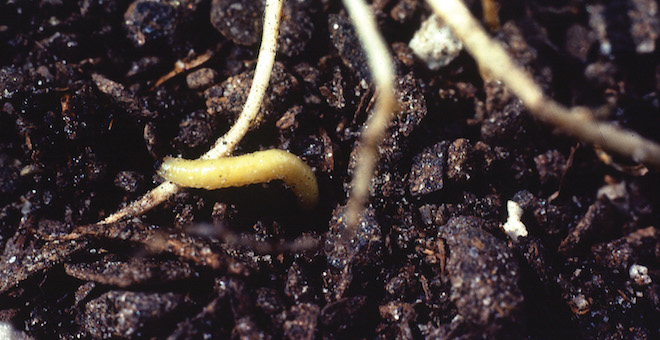

Jun 21, 2021Mating disruption products availability, practice grows
More types of agricultural pheromones available in the market for an increasing number of pests give growers options for pest control.
Mating disruption products confuse and distract insect pests from procreation using artificial pheromones linked to pests’ aggregation and mating behavior. The niche for the products is growing. Market analytics firm Fortune Business Insights expects the global agricultural pheromones market to become a $7.80 billion industry by 2027, while growing nearly 16% per year between 2020 and 2027.


“The growth is attributable to the increasing adoption of integrated pest management practices and the growing focus on implementing technology for efficient crop monitoring services that will boost the adoption of innovative agricultural pheromones worldwide,” the firm wrote in a January news release. It added that the market had grown at a lower rate in 2020 due to COVID-19 disruptions in the supply chain.
Extension offices at universities around the country are on board. Penn State Extension as early as 2017 wrote that “large-scale mating disruption implementation trials have yielded significant reductions in pesticide use while keeping crop damage levels acceptably low.” Through the present day, mating disruption continues to be an important part of integrated pest management for apple growers controlling such pests as Oriental fruit moth and codling moth.
As Fruit Growers News reported earlier this year, Michigan State University’s Larry Gut is trialing mating disruption products for San Jose scale, a pest traditionally controlled with dormant oils that are increasing in cost and broad-spectrum pesticides, such as chlorpyriphos, that face increasing restriction.
The products are used in crops other than fruit. Oklahoma-based Trécé LLC, which is working with Gut on the San Jose scale trials and is well-known for its codling moth traps for monitoring, continues to research and release new products for use in almonds, pistachios, walnuts and even a product targeting corn rootworm. The company markets itself as having registered more than 100 species-specific, pheromone-based kits, attractants and lures under its CideTrak, StorGard and PheroCon brands.


A new offering released in October 2020, CideTrak IMM MEC, disrupts the mating habits of pests that do most of their damage in grains or dried fruits: Indianmeal moth, Plodia interpunctella; tobacco moth, Ephestia elutella; almond moth, Cadra cautella; raisin moth, Cadra figulilella; and Mediterranean flour moth, Ephestia kuehniella.
“We have probably around 15 new mating disruption products in research and development trials right now, so I think as there are fewer and fewer tools available to growers and pest managers in terms of insecticides, there’s a greater need for other ways to manage their pests,” said Danielle Kirkpatrick, Trécé’s global technical support coordinator. “Mating disruption as a whole is a growing area, and so I’d say within the next 2-3 years, we’ll have anywhere from 5-10 new mating disruption products developed.”
Most of the products Trécé has are registered for use in organic-certified farm operations, she said, and they’re certified through the Washington State Department of Agriculture.
In addition to there being more products, companies are also making the products easier to apply.
“Sprayable pheromones are a new area that is being developed,” Kirkpatrick said. “We call them microencapsulated, or MEC for short. That’s one of the areas we’ve been focusing on, to have an alternative option for the growers versus going out and hanging up hand-applied dispensers.”
— Stephen Kloosterman, associate editor














